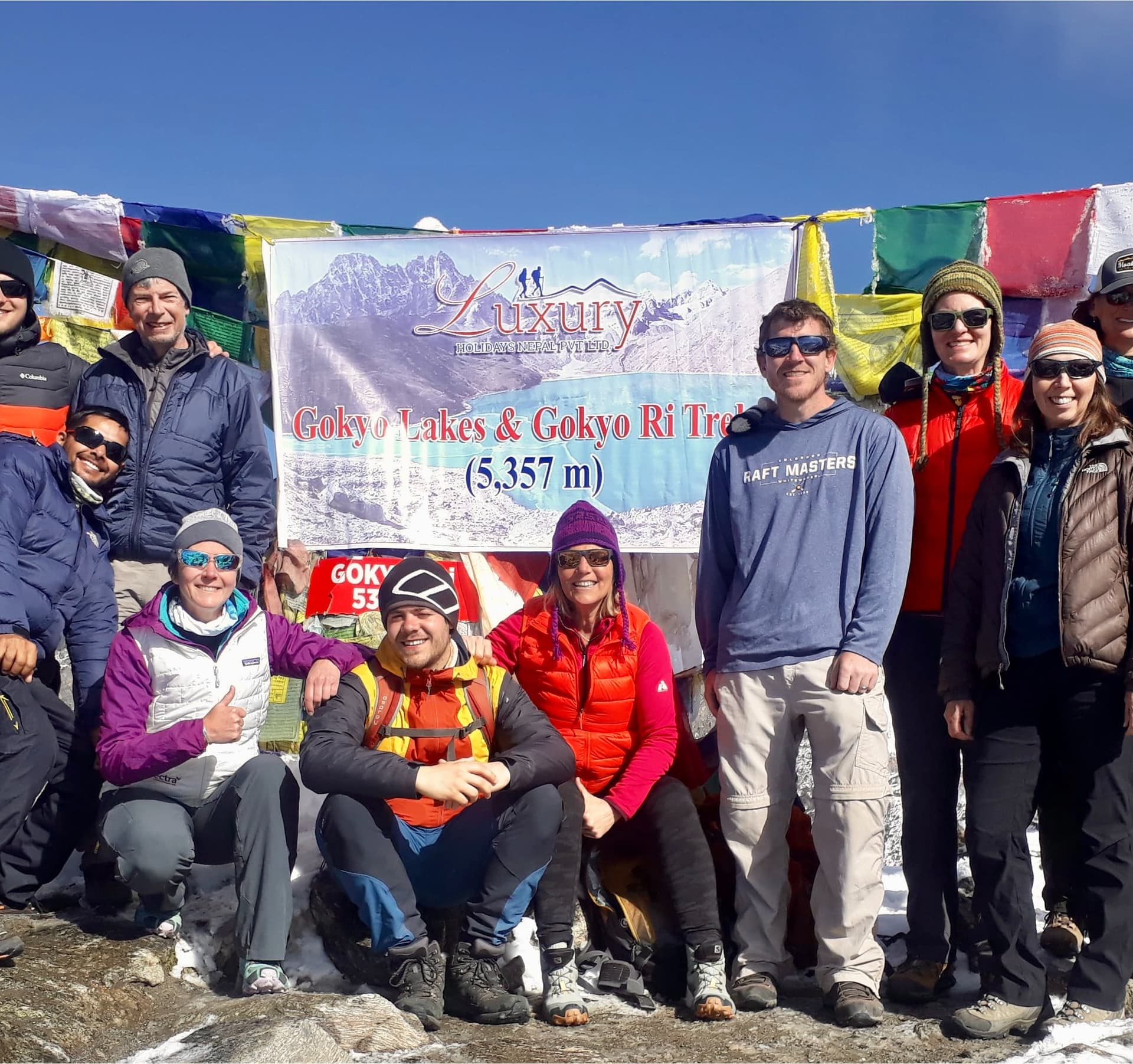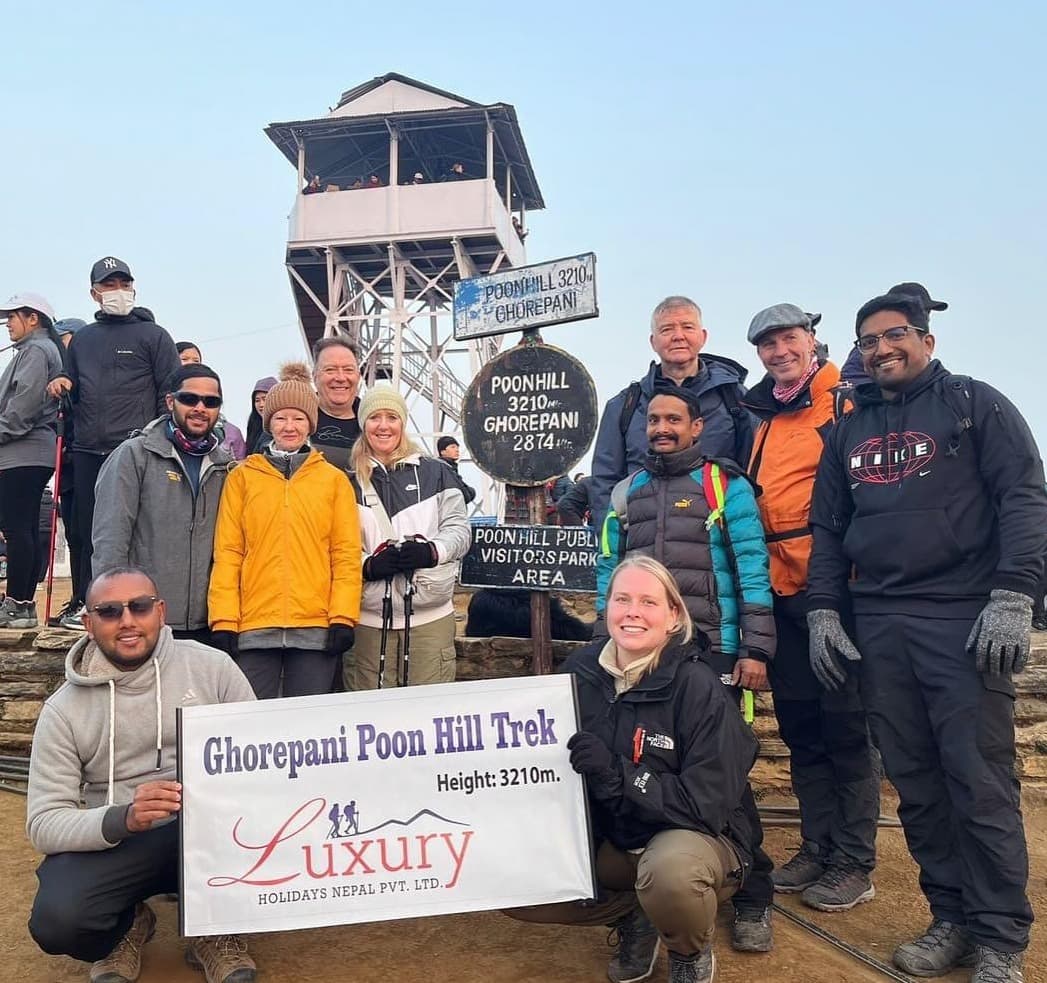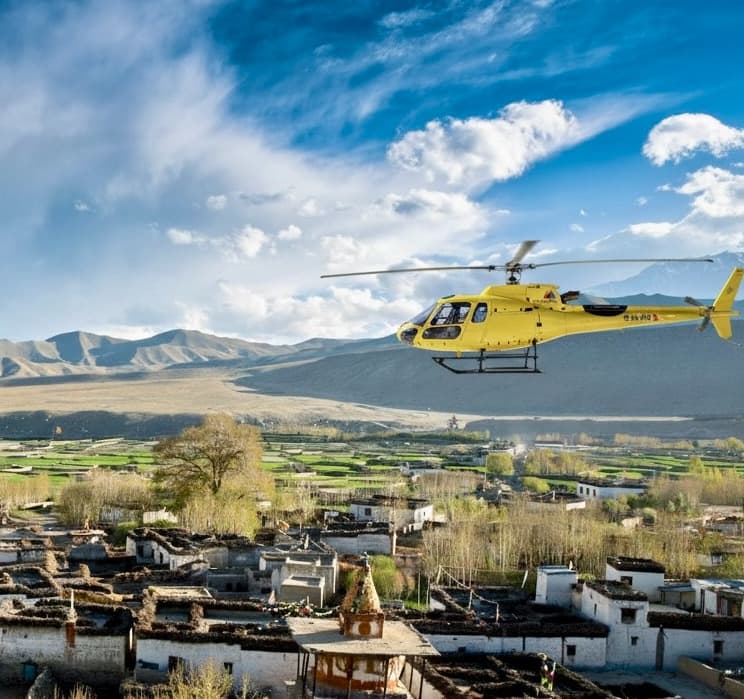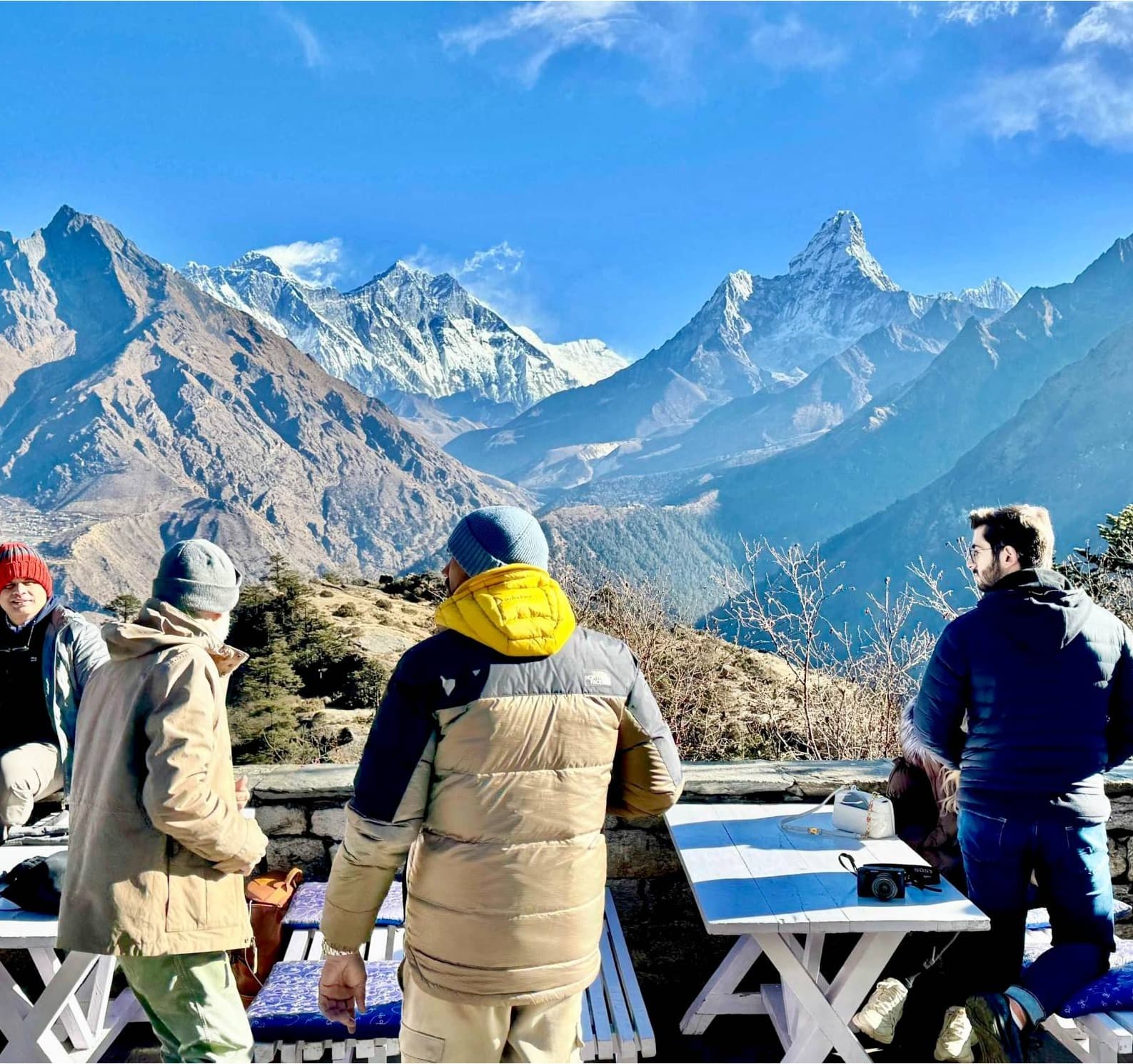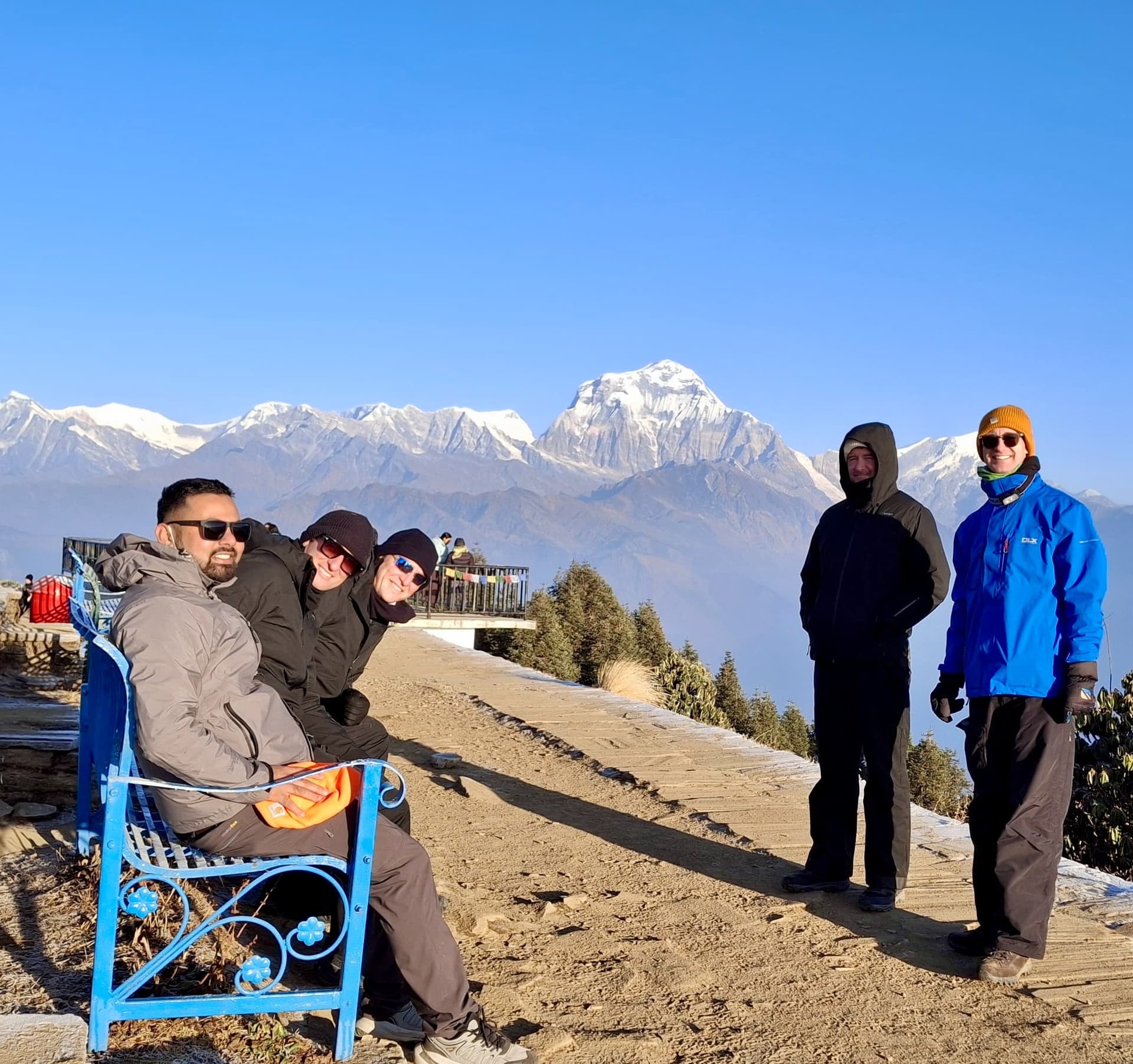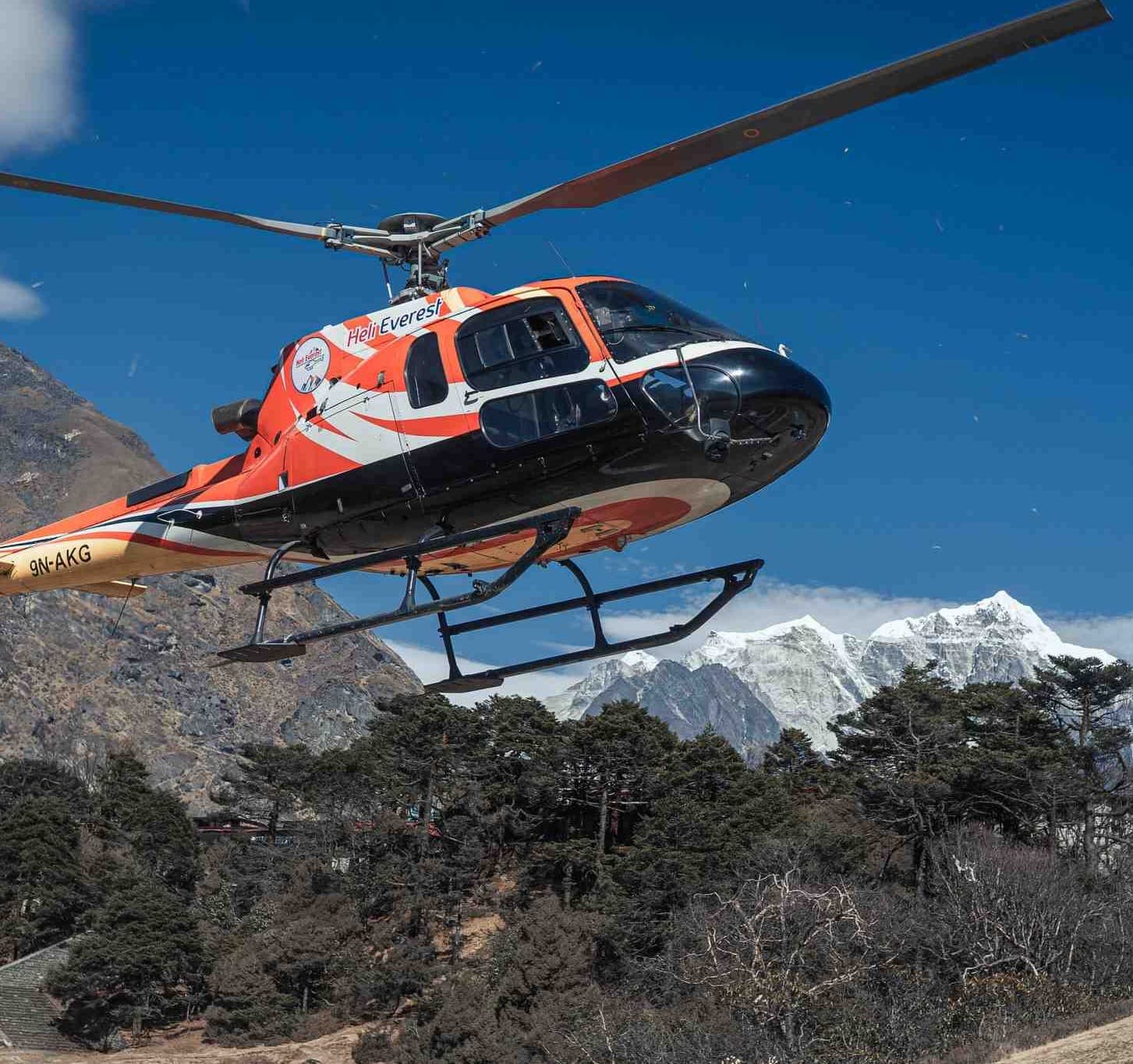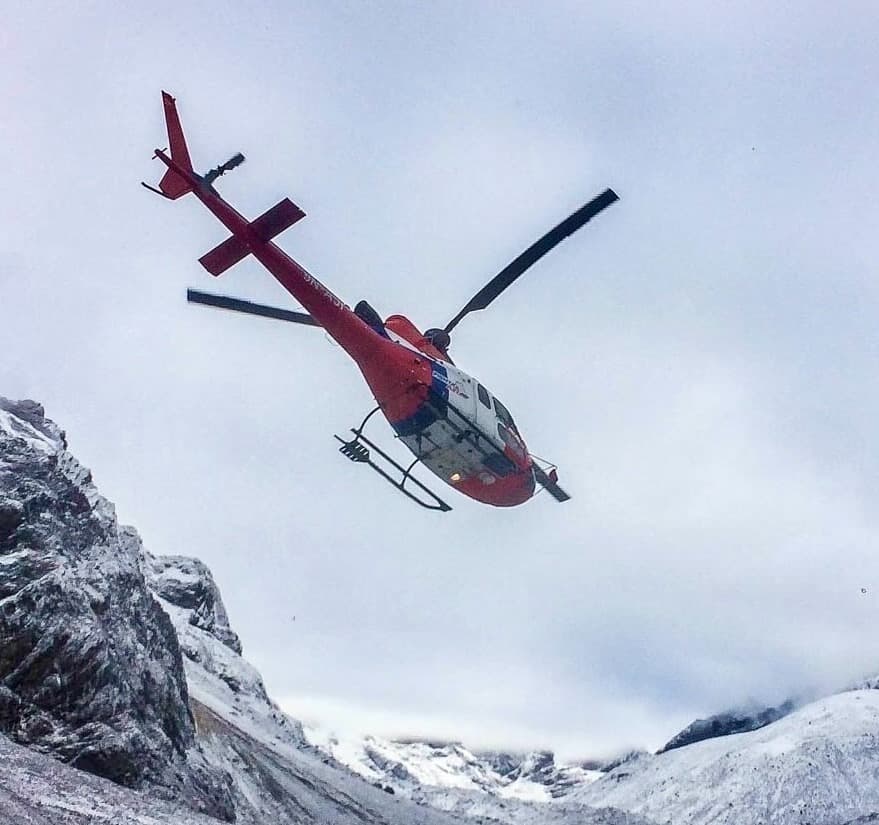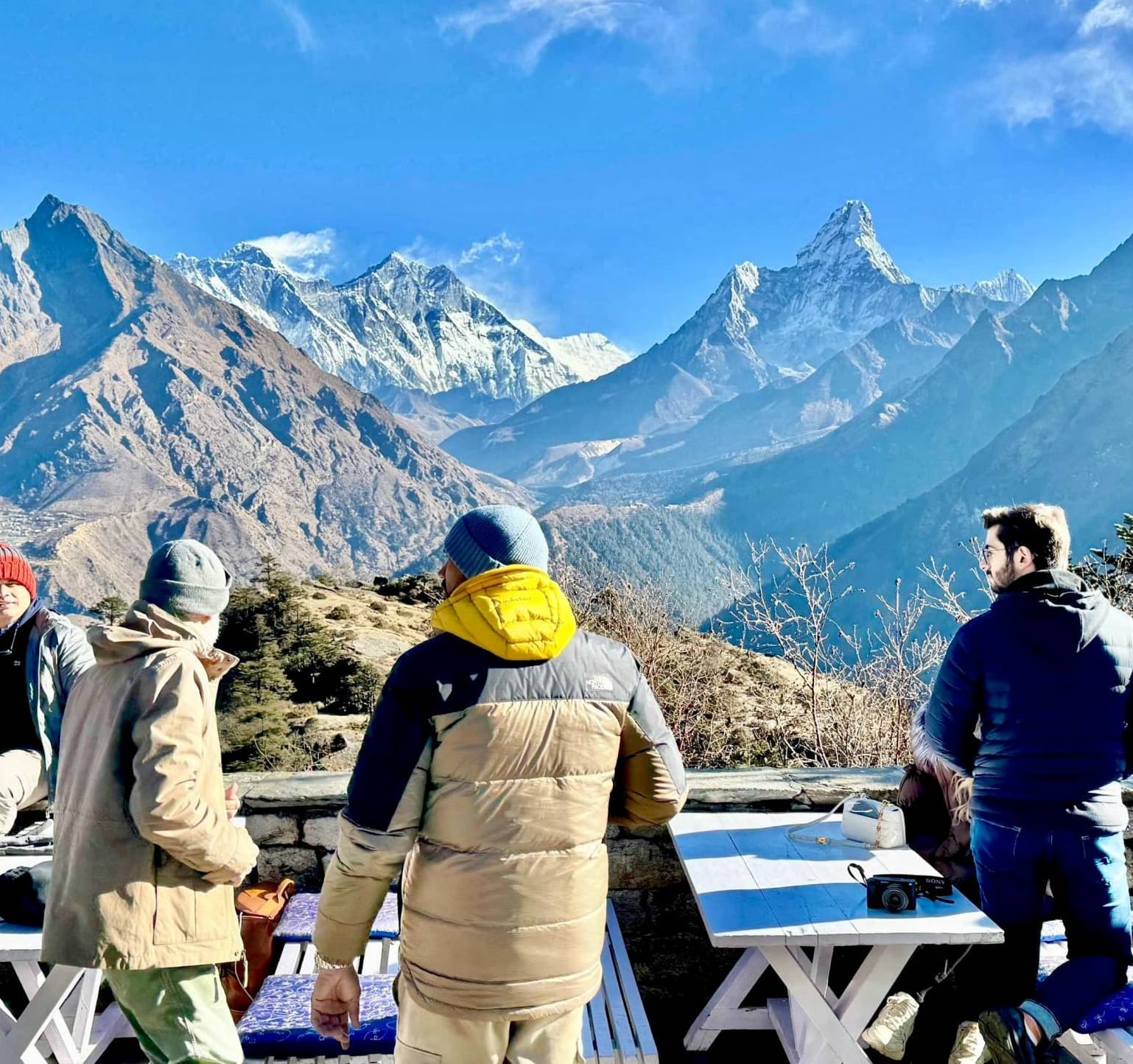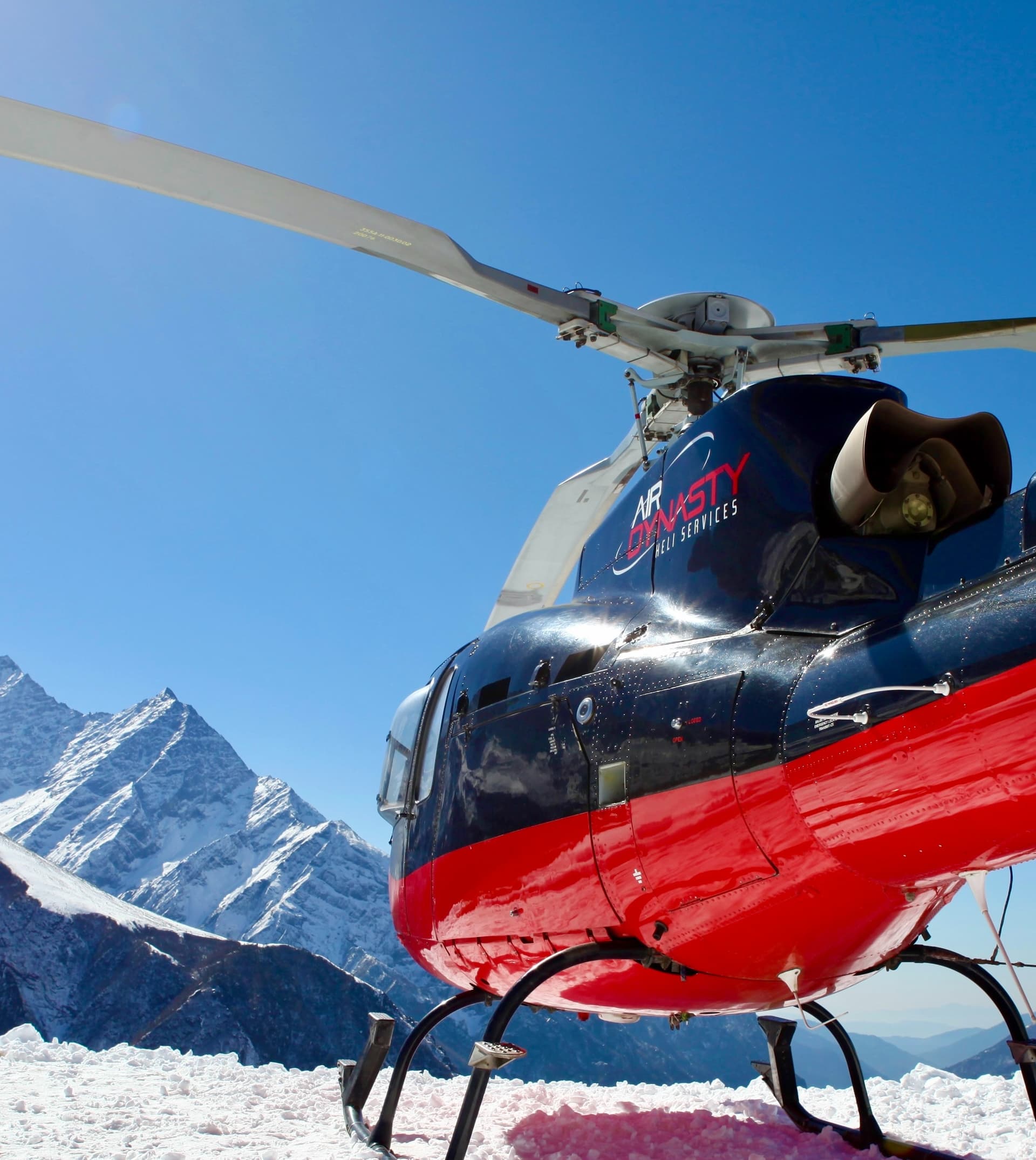Trekking in Nepal is a dream come true for adventurers and nature enthusiasts from around the world. With its stunning landscapes, rich cultural heritage, and diverse trekking routes, Nepal offers an unparalleled experience for hikers. From the iconic Everest Base Camp trek to the serene Langtang Valley trek, the country boasts some of the best hikes in Nepal. Whether you are seeking challenging trails like the Manaslu Circuit trek or more accessible options like the Ghorepani Poon Hill trek, there is something for everyone. At Luxury Holidays Nepal, we specialize in providing guided treks in Nepal, ensuring that you have a safe and enriching experience. Our comprehensive Nepal trekking packages cater to all preferences, from family-friendly treks in Nepal to luxury trekking in Nepal. Join us to explore the breathtaking hiking trails in Nepal and create unforgettable memories in the Himalayas.
Why Nepal for Trekking and Hiking?
Nepal is renowned globally as the ultimate destination for trekking and hiking enthusiasts, and for good reason. Here are several compelling reasons why Trekking in Nepal should be at the top of your adventure bucket list:
- Diverse Trekking Routes: Nepal offers a wide range of trekking routes that cater to all levels of experience and fitness. From the challenging Everest Base Camp trek and the extensive Annapurna Circuit trek to the shorter and more accessible Ghorepani Poon Hill trek, there is something for everyone. The country is home to numerous Nepal trekking routes that provide a variety of landscapes and experiences.
- Stunning Natural Beauty: The Himalayas are the crown jewels of Nepal, featuring eight of the world's fourteen highest peaks. Trekking in Nepal allows you to witness breathtaking mountain vistas, lush valleys, and pristine forests. Whether you are hiking the Langtang Valley trek or the Manaslu Circuit trek, the scenery is nothing short of spectacular.
- Rich Cultural Experience: Trekking in Nepal is not just about the mountains. The journey also offers a deep dive into the rich cultural heritage of the region. Along the trails, you will encounter various ethnic communities, each with its unique traditions, languages, and lifestyles. Treks like the Everest Base Camp trek and the Annapurna Circuit trek provide ample opportunities to visit monasteries, traditional villages, and local markets.
- Guided Treks in Nepal: For those who prefer a structured experience, guided treks in Nepal are widely available. These guided tours ensure safety, provide local insights, and enhance your overall trekking experience. Luxury Holidays Nepal offers professional Nepal trekking guide services, making your adventure both enriching and hassle-free.
- Accessibility and Infrastructure: Nepal has a well-established trekking infrastructure, including a network of teahouses and lodges along popular trails. This makes it easier for trekkers to find accommodation, meals, and other essentials. Additionally, major trekking regions like the Everest and Annapurna regions are easily accessible from Kathmandu.
- Flexible Trekking Packages: Whether you are looking for family-friendly treks in Nepal, solo trekking in Nepal, or even luxury trekking in Nepal, there are numerous Nepal trekking packages to choose from. These packages can be tailored to suit your preferences, ensuring you have the adventure of a lifetime.
- Permit and Support Services: Trekking in Nepal is well-regulated, and obtaining the necessary trekking permits in Nepal is straightforward with the right guidance. Our team at Luxury Holidays Nepal assists in securing all required permits, ensuring a smooth and worry-free trekking experience.
- Trekking Seasons: The Nepal trekking season typically offers excellent weather conditions for trekking. The best times to trek are during the pre-monsoon (March to May) and post-monsoon (September to November) periods when the skies are clear and the temperatures are moderate. However, some regions offer year-round trekking possibilities.
Nepal's unparalleled natural beauty, rich cultural heritage, diverse trekking routes, and excellent support services make it the premier destination for trekking and hiking. At Luxury Holidays Nepal, we are dedicated to providing exceptional trekking experiences, whether you seek adventure, luxury, or cultural immersion. Join us to explore the majestic hiking trails in Nepal and embark on an unforgettable journey through the Himalayas.
Difference Between Hiking and Trekking
Hiking generally refers to shorter, less strenuous walks on well-defined paths, often completed within a single day. In contrast, trekking involves longer, more challenging journeys that can last several days or weeks, typically through more rugged and remote areas. While hiking is often a leisure activity, trekking requires more preparation, endurance, and sometimes involves higher altitudes and harsher conditions.
Different Types of Trekking in Nepal
In Nepal, trekking can be categorized into several types based on duration, difficulty, and comfort level. Tea house treks offer accommodation in local lodges, camping treks involve sleeping in tents, and luxury treks provide high-end amenities. Popular routes include short treks in Nepal like the Ghorepani Poon Hill trek, moderate treks such as the Langtang Valley trek, and more demanding ones like the Everest Base Camp trek and Manaslu Circuit trek.
Most Visited Trek in Nepal
The Everest Base Camp trek is the most visited trek in Nepal. This iconic journey attracts thousands of trekkers each year, offering a chance to see Mount Everest up close and experience the unique culture of the Sherpa people. Its combination of challenging trails, breathtaking landscapes, and historical significance makes it a top choice for adventurers worldwide.
Why Nepal is Famous for Trekking
Nepal is famous for trekking due to its unparalleled natural beauty, home to eight of the world's fourteen highest peaks, including Mount Everest. The diverse Nepal trekking routes offer something for everyone, from the lush valleys of the Annapurna Circuit trek to the remote landscapes of the Manaslu Circuit trek. Additionally, the rich cultural heritage, hospitable locals, and well-established trekking infrastructure make Nepal an ideal destination for trekkers seeking both adventure and cultural immersion.
Difference Between Hiking and Trekking
Hiking and trekking differ primarily in duration and intensity. Hiking is typically a shorter, day-long activity on well-marked trails, often seen as a leisurely outdoor exercise. In contrast, trekking involves multi-day journeys through rugged and remote terrains, demanding greater physical endurance and preparation. While hiking can be done almost anywhere with minimal gear, trekking usually requires more planning, equipment, and sometimes permits, especially in regions like the Himalayas.
What is Called Hiking?
Hiking refers to walking on trails or pathways, usually in natural environments such as forests, hills, or parks. It is a recreational activity enjoyed by people of all ages and fitness levels, typically done within a single day. Hiking is an excellent way to enjoy nature, exercise, and escape the hustle and bustle of everyday life without the need for extensive planning or equipment.
What is the Trekking Rule in Nepal?
Trekking in Nepal is regulated to ensure the safety of trekkers and the preservation of the environment. Key rules include obtaining necessary trekking permits in Nepal, such as the TIMS (Trekkers' Information Management System) card and specific permits for restricted areas. Trekkers are also advised to hire a licensed guide or porter, especially for more challenging routes. Respecting local customs and environmental guidelines, such as not littering and minimizing the impact on local communities, is also essential.
How Many Days Trekking in Nepal?
The duration of trekking in Nepal varies widely, depending on the chosen route and the trekker's fitness level. Short treks, like the Ghorepani Poon Hill trek, can be completed in 3-5 days, while more extensive treks, such as the Annapurna Circuit trek or the Everest Base Camp trek, typically take 12-20 days. Some treks, like the Manaslu Circuit trek, can take up to 21 days or more, offering a deeper exploration of Nepal's remote and diverse landscapes.
What is the Most Difficult Trek in Nepal?
The Great Himalayan Trail is considered the most difficult trek in Nepal. Spanning approximately 1,700 kilometers, this trail traverses the entire length of the country from east to west, crossing some of the highest and most remote regions of the Himalayas. The trek is extremely challenging due to its length, high altitude, rugged terrain, and unpredictable weather conditions, requiring advanced trekking skills, endurance, and comprehensive preparation.
Who is the Father of Trekking in Nepal?
Col. Jimmy Roberts is often referred to as the father of trekking in Nepal. A British Army officer, Roberts introduced the concept of commercial trekking in the 1960s. He established the first trekking agency in Nepal and pioneered many of the classic trekking routes, including the Annapurna Circuit trek and the Everest Base Camp trek, making the beauty of Nepal's Himalayas accessible to international trekkers.
Which is the Shortest Trek in Nepal?
The Nagarkot to Changunarayan trek is one of the shortest treks in Nepal. This trek can be completed in a single day, taking about 3-4 hours to cover a distance of approximately 12 kilometers. It offers panoramic views of the Himalayas and takes trekkers through lush forests and traditional villages, making it an excellent option for those with limited time or looking for a brief yet rewarding trekking experience.
What is the Longest Trek in Nepal?
The Great Himalayan Trail is the longest trek in Nepal, stretching over 1,700 kilometers from the eastern to the western borders of the country. This extensive trail connects various high-altitude routes and remote villages, offering trekkers an opportunity to experience the diverse landscapes and cultures of Nepal. Completing the entire Great Himalayan Trail can take several months, depending on the chosen sections and trekking pace.
What is Special About Trekking?
Trekking is special because it offers a unique blend of physical challenge, natural beauty, and cultural immersion. Unlike other forms of travel, trekking allows you to explore remote and often untouched areas, providing an intimate experience with nature. It also offers the opportunity to connect with local communities, learn about different cultures, and see breathtaking landscapes that are inaccessible by other means. The sense of accomplishment from completing a trek, along with the tranquility of being in nature, makes trekking a profoundly rewarding experience.
What is the Concept of Trekking?
The concept of trekking revolves around long-distance walking through varied terrains, often in remote and natural environments. Unlike hiking, which is typically a shorter, day-long activity, trekking involves multi-day journeys that can span from a few days to several weeks. Trekkers carry essential supplies and equipment, either in backpacks or with the help of porters, and often stay in local lodges or campsites along the way. The goal is to immerse oneself in nature, experience the beauty of the outdoors, and sometimes reach significant landmarks or high-altitude points.
Who Started Trekking in Nepal?
Col. Jimmy Roberts is credited with starting commercial trekking in Nepal. In the early 1960s, he introduced the concept of organized trekking expeditions to the region, pioneering many of the routes that are popular today. He founded Mountain Travel Nepal, the first trekking agency in the country, which set the foundation for Nepal's trekking tourism industry and opened up the Himalayas to international adventurers.
How Many Types of Trekking Are There?
There are several types of trekking, catering to different preferences and levels of adventure. These include:
- Tea House Treks: Involves staying in local lodges or guesthouses along the trekking route, offering a balance of comfort and adventure.
- Camping Treks: Requires carrying tents and supplies, with overnight stays in campsites, suitable for more remote and less developed areas.
- Luxury Treks: Offers high-end accommodations, gourmet meals, and additional comforts, combining adventure with luxury.
- Guided Treks: Led by experienced guides who provide local insights, ensure safety and handle logistics.
- Independent Treks: Undertaken without a guide or organized support, suitable for experienced trekkers who prefer more flexibility and self-sufficiency.
These different types of trekking allow individuals to choose the experience that best fits their adventure style and comfort level.
Is Hiking the Same as Walking?
Hiking is not the same as walking. While both involve traveling on foot, hiking typically refers to walking on natural trails, often in rural or wilderness areas, and is usually more strenuous than regular walking. Hiking often involves uneven terrain, inclines, and sometimes longer distances, requiring more physical effort and sometimes specific gear. In contrast, walking usually takes place on flat, even surfaces like sidewalks or roads and is generally less demanding.
Does Hiking Mean Climbing?
Hiking does not necessarily mean climbing, although it can include elements of climbing. Hiking involves walking on trails and paths in natural environments, which can include ascending and descending hills and mountains. Climbing, on the other hand, specifically refers to the activity of ascending steep or vertical surfaces, often requiring technical skills and specialized equipment. While some hikes might involve sections that require scrambling or climbing, they are usually not as technically demanding as climbing.
Can I Trek Alone in Nepal?
Yes, you can trek alone in Nepal, but it is recommended to take certain precautions. Solo trekking offers flexibility and a sense of adventure, but it also comes with risks such as getting lost, facing medical emergencies, or encountering challenging weather conditions. It is advisable to inform someone about your trekking plans, carry proper equipment, and be well-prepared. Hiring a Nepal trekking guide or joining a group can enhance safety and provide a more enriching experience.
Is Trekking in Nepal Expensive?
Trekking in Nepal can vary in cost depending on the type of trek, duration, and level of comfort desired. Budget-friendly options are available, such as tea house treks, where accommodation and food are relatively inexpensive. More luxurious treks, which include high-end accommodations, meals, and additional services, will be more expensive. Costs also include trekking permits, guide and porter fees, equipment, and travel insurance. Overall, trekking in Nepal offers a range of options to fit different budgets.
Can I Trek Without a Guide in Nepal?
Yes, you can trek without a guide in Nepal, but it requires careful planning and preparation. Independent trekking allows for greater flexibility and can be more cost-effective. However, it also comes with risks, such as navigating unfamiliar trails, dealing with emergencies, and managing permits. Popular routes like the Annapurna Circuit trek and Everest Base Camp trek have well-marked paths and adequate infrastructure, making them suitable for experienced trekkers to do solo. Nonetheless, hiring a guide can enhance safety, provide local insights, and enrich your overall experience.
Will I Lose Weight Trekking in Nepal?
Yes, trekking in Nepal can lead to weight loss due to the intense physical activity involved. Trekking requires walking long distances over varied and often challenging terrains, which burns a significant number of calories. Additionally, the high altitude and carrying a backpack can increase the physical demands on your body. Combined with a diet that is typically high in carbohydrates but low in fat, many trekkers find they lose weight during their trek.
Which Month is Best for Trekking?
The best months for trekking in Nepal are during the pre-monsoon (spring) and post-monsoon (autumn) seasons. Specifically, March to May and September to November offer the most favorable weather conditions. During these periods, the skies are clear, temperatures are moderate, and the trails are in good condition. The spring season also brings blooming rhododendrons, while autumn offers crystal-clear views of the mountains, making these months ideal for enjoying the stunning landscapes of Nepal.
Which Trek is Most Scenic in Nepal?
The Annapurna Circuit trek is often considered the most scenic trek in Nepal. This trek offers a diverse range of landscapes, from lush subtropical forests and terraced rice fields to alpine meadows and arid high-altitude deserts. The highlight is the crossing of the Thorong La Pass, which provides breathtaking panoramic views of the Annapurna and Dhaulagiri mountain ranges. The combination of natural beauty, cultural richness, and varied terrain makes the Annapurna Circuit trek a visual feast for trekkers.
Is Annapurna Easier Than Everest?
Yes, the Annapurna Circuit trek is generally considered easier than the Everest Base Camp trek. The Annapurna Circuit offers a lower maximum altitude, more gradual ascents, and better accessibility to amenities like tea houses and medical facilities. While both treks are challenging, the Everest Base Camp trek involves higher altitudes and steeper climbs, making it more physically demanding. However, the Annapurna Circuit still requires good physical fitness and preparation.
How to Choose a Trek in Nepal?
Choosing a trek in Nepal depends on several factors, including your fitness level, trekking experience, time availability, and interests. Consider the duration of the trek, the altitude, and the difficulty level. Popular treks like the Everest Base Camp trek and Annapurna Circuit trek offer stunning views and well-developed infrastructure. For a more secluded experience, routes like the Manaslu Circuit trek or the Langtang Valley trek are excellent choices. Determine whether you prefer guided treks or independent trekking, and ensure you are adequately prepared for the terrain and weather conditions.
Is Nepal Safe for Hiking?
Yes, Nepal is generally safe for hiking. The country has well-established trekking routes and a strong support system for trekkers. However, safety depends on careful planning, respecting local regulations, and being aware of potential risks such as altitude sickness, weather changes, and trail conditions. Hiring a guide or porter can enhance safety, especially for more challenging or remote treks. Always inform someone about your trekking plans and carry the necessary supplies and equipment.
Which Trek is Less Crowded in Nepal?
The Manaslu Circuit trek is one of the less crowded treks in Nepal. It offers a remote and challenging experience with stunning scenery and cultural richness, similar to the more popular routes but with fewer trekkers. The requirement for a special permit and the relative difficulty of the trail help keep the number of trekkers low, providing a more solitary and immersive trekking experience.
Is Solo Trekking Banned in Nepal?
As of 2023, solo trekking is banned in certain high-risk areas of Nepal, including restricted regions that require special permits. This measure is taken to enhance the safety of trekkers due to the risks associated with remote and challenging terrains. However, solo trekking is still allowed on many popular routes such as the Annapurna Circuit trek and Everest Base Camp trek, where infrastructure and support services are well established. It is always advisable to check the latest regulations and consider hiring a guide for safety and support.
Which is the Longest Hiking Trail in Nepal?
The Great Himalayan Trail is the longest hiking trail in Nepal. Spanning approximately 1,700 kilometers, it runs from the eastern to the western borders of Nepal, crossing some of the highest and most remote regions of the Himalayas. The trail connects a series of smaller routes, offering a comprehensive and challenging trekking experience that can take several months to complete.
What is the Best Age to Start Trekking?
The best age to start trekking varies, but generally, children as young as 8-10 years can begin trekking on easier, shorter trails under proper guidance. There is no upper age limit as long as the individual is in good health and has a reasonable level of physical fitness. Many people in their 60s and 70s successfully undertake treks in Nepal. It is crucial to choose a trek that matches the physical capabilities and endurance of the trekker, regardless of age.
Which Season is Best for Hiking in Nepal?
The best seasons for hiking in Nepal are spring (March to May) and autumn (September to November). During these periods, the weather is generally stable with clear skies, making for excellent trekking conditions. Spring offers blooming rhododendrons and pleasant temperatures, while autumn provides crystal-clear mountain views and moderate temperatures. These seasons are ideal for experiencing the natural beauty and cultural richness of Nepal's trekking routes.
Which is the Best Trek in Nepal for 3 Days?
The Ghorepani Poon Hill trek is the best trek in Nepal for a 3-day adventure. This short but rewarding trek offers breathtaking panoramic views of the Annapurna and Dhaulagiri mountain ranges. It is accessible from Pokhara and takes you through beautiful rhododendron forests and traditional Gurung villages. The highlight is the sunrise view from Poon Hill, which is one of the most spectacular sights in the Himalayas.
What is the Shortest and Easiest Trek in Nepal?
The Nagarkot to Changunarayan trek is the shortest and easiest trek in Nepal. This trek can be completed in a single day and takes about 3-4 hours. It is perfect for beginners and those with limited time. The trail offers stunning views of the Himalayas, lush forests, and the opportunity to visit the ancient Changunarayan Temple, a UNESCO World Heritage Site.
What is the Trekking Rule in Nepal?
Trekking in Nepal is regulated to ensure safety and environmental preservation. Key rules include obtaining necessary trekking permits in Nepal such as the TIMS (Trekkers' Information Management System) card and specific permits for restricted areas. Trekkers are encouraged to hire licensed guides or porters, especially for more challenging routes. Additionally, trekkers must respect local customs, avoid littering, and minimize their environmental impact. Proper acclimatization and adherence to safety guidelines are also crucial to prevent altitude sickness and other health issues.
Is Hiking in Nepal Expensive?
Hiking in Nepal can be quite affordable compared to other international trekking destinations. Costs vary depending on the type of trek, duration, and level of comfort desired. Budget-friendly options such as tea house treks offer inexpensive accommodation and meals. More luxurious treks with high-end amenities will be more expensive. Additional costs include trekking permits, guide and porter fees, equipment, and travel insurance. Overall, Nepal offers a range of options to suit different budgets, making it accessible for many hikers.
Top 10 Trekking Destinations in Nepal
Nepal offers some of the world’s most stunning trekking destinations, each with unique landscapes and cultural experiences. The Everest Base Camp trek is iconic, providing close-up views of the world's highest peak. The Annapurna Circuit trek and Annapurna Base Camp trek offer diverse scenery and cultural encounters. The Langtang Valley trek is known for its beautiful valley landscapes. The Manaslu Circuit trek provides a remote and rugged experience. The Ghorepani Poon Hill trek is perfect for short treks with panoramic views. The Makalu Base Camp trek offers solitude and dramatic landscapes. The Kanchenjunga Base Camp trek takes you to the world’s third highest mountain. The Upper Mustang trek reveals a unique, arid landscape and Tibetan culture. Lastly, the Dhaulagiri Circuit trek offers challenging terrain and stunning high-altitude vistas.
Best Time to Trek in Nepal: A Seasonal Guide
The best time to trek in Nepal is during the spring (March to May) and autumn (September to November) seasons. Spring brings blooming rhododendrons and moderate temperatures, making it ideal for enjoying the vibrant flora and clear mountain views. Autumn offers stable weather, clear skies, and excellent visibility, perfect for high-altitude treks like the Everest Base Camp trek. Winter (December to February) can be suitable for lower-altitude treks but is generally colder and more challenging. The monsoon season (June to August) brings heavy rains and is best avoided for most trekking routes due to slippery trails and potential landslides.
Top 5 Off-the-Beaten-Path Treks in Nepal
For those seeking solitude and adventure, Nepal offers several off-the-beaten-path treks. The Manaslu Circuit trek provides a remote experience with fewer crowds and stunning scenery. The Makalu Base Camp trek is challenging and offers dramatic landscapes and pristine wilderness. The Upper Dolpo trek takes you to one of the most remote regions, rich in Tibetan culture and unique landscapes. The Tsum Valley trek offers a cultural journey through a sacred Himalayan pilgrimage valley. Finally, the Dhaulagiri Circuit trek is known for its challenging terrain and breathtaking high-altitude vistas, offering a true sense of adventure and exploration.
How to Prepare Physically and Mentally for a High-Altitude Trek
Preparing for a high-altitude trek involves both physical and mental preparation. Physically, start training at least three months in advance with a focus on cardiovascular fitness, strength training, and endurance. Activities like running, hiking, and stair climbing are excellent for building stamina. Mentally, familiarize yourself with the challenges of high-altitude trekking, such as altitude sickness and weather variations. Practice mindfulness and stress-reduction techniques to stay calm and focused. Ensure you have the right gear, including proper clothing, footwear, and equipment. Lastly, plan for acclimatization days to help your body adjust to the altitude, and always listen to your body’s signals.
Cultural Encounters on the Trails: Experiencing Nepalese Villages
Trekking in Nepal offers unique cultural encounters as you pass through traditional Nepalese villages. Along routes like the Annapurna Circuit trek and Everest Base Camp trek, you will meet diverse ethnic groups such as the Gurung, Sherpa, and Tamang people. These interactions provide insights into local customs, traditional lifestyles, and ancient Buddhist and Hindu practices. Staying in tea houses run by local families allows for a deeper cultural exchange, offering trekkers a chance to experience warm hospitality, local cuisine, and vibrant cultural traditions firsthand.
Wildlife and Nature: What to Expect on Nepal's Treks
Nepal's treks are a treasure trove of wildlife and natural beauty. Trekkers can expect to encounter diverse ecosystems ranging from subtropical forests to alpine meadows. Wildlife sightings may include Himalayan tahr, red pandas, langur monkeys, and various species of deer. Bird watchers will delight in spotting species like the colorful Himalayan monal and eagles soaring above. Flora enthusiasts can enjoy the seasonal blooms of rhododendrons and other wildflowers. The dramatic landscapes, including towering peaks, glacial rivers, and lush valleys, create a stunning backdrop for these natural encounters.
Guide to Trekking Permits and Regulations in Nepal
Trekking in Nepal requires various permits to ensure the safety of trekkers and the preservation of the environment. The Trekkers' Information Management System (TIMS) card is mandatory for most treks. Additionally, permits like the Annapurna Conservation Area Permit (ACAP) or the Sagarmatha National Park Permit are required for specific regions. Restricted areas such as the Manaslu or Upper Mustang regions necessitate special permits and a guide. Trekkers should obtain these permits from authorized agencies or the Nepal Tourism Board. Adhering to local regulations, respecting cultural norms, and minimizing environmental impact are essential for a responsible trekking experience.
Family-Friendly Treks in Nepal: Adventures for All Ages
Nepal offers several family-friendly treks that cater to adventurers of all ages. The Ghorepani Poon Hill trek is a popular choice, featuring moderate trails, comfortable tea house accommodations, and breathtaking sunrise views over the Himalayas. The Nagarkot to Changunarayan trek is another excellent option, offering short and easy routes with stunning vistas and cultural sites. The Langtang Valley trek provides a blend of beautiful landscapes and cultural experiences with manageable trail difficulty. These treks ensure that families can enjoy the beauty of Nepal together, making lifelong memories in a safe and accessible environment.
The Spiritual Journey: Pilgrimage Treks in Nepal
Nepal's pilgrimage treks offer a profound spiritual journey through some of the most sacred sites in the Himalayas. The Gosaikunda Lake trek takes you to a revered alpine lake considered holy by both Hindus and Buddhists. The Muktinath trek leads to the sacred temple of Muktinath, an important pilgrimage site for Hindu and Buddhist devotees. The Pathibhara Devi Temple trek in eastern Nepal is another significant pilgrimage route. These treks combine spiritual exploration with the natural beauty of Nepal, providing a deeply enriching experience for the soul.
Health and Safety Tips for Trekking in Nepal
Trekking in Nepal requires careful attention to health and safety to ensure a safe and enjoyable journey. Acclimatize properly to prevent altitude sickness by ascending gradually and taking rest days. Stay hydrated and maintain a balanced diet to keep your energy levels up. Carry a well-stocked first aid kit and know basic first aid procedures. Always trek with a guide or a companion, especially in remote areas. Ensure you have appropriate gear for varying weather conditions, including layers for warmth, waterproof clothing, and sturdy footwear. Obtain the necessary permits and inform someone about your trekking plans.
Trekking During Festivals: Unique Cultural Experiences in Nepal
Trekking in Nepal during festivals offers a unique cultural experience, as you can witness and participate in vibrant local celebrations. The Tihar festival (Festival of Lights) lights up the entire country, providing a colorful and joyous atmosphere. During Dashain, Nepal's longest and most significant festival, you can experience traditional rituals and family gatherings. The Mani Rimdu festival in the Everest region, celebrated by the Sherpa community, involves masked dances and religious ceremonies at monasteries. These festivals add a rich cultural dimension to your trekking adventure, allowing for deeper cultural immersion and unforgettable memories.
Trekking and hiking in Nepal offer unparalleled experiences that blend breathtaking natural beauty, rich cultural encounters, and thrilling adventures. From iconic routes like the Everest Base Camp trek and Annapurna Circuit trek to serene and less-traveled paths such as the Manaslu Circuit trek and Langtang Valley trek, Nepal has something for every trekker. Whether you're seeking spiritual journeys, family-friendly adventures, or challenging high-altitude treks, Nepal's diverse landscapes and welcoming people ensure a memorable and transformative journey. Join us at Luxury Holidays Nepal to explore the majestic Himalayas and create lifelong memories on these incredible trails.
General FAQs on Trekking and Hiking in Nepal
1: What are the best trekking destinations in Nepal?
The best trekking destinations in Nepal include the Everest Base Camp trek, Annapurna Circuit trek, Langtang Valley trek, Manaslu Circuit trek, and Ghorepani Poon Hill trek. Each offers unique landscapes, cultural experiences, and varying levels of difficulty.
2: Do I need a guide for trekking in Nepal?
While you can trek without a guide on popular routes, hiring a guide is recommended for safety, local insights, and logistical support. Certain restricted areas require a licensed guide.
3: When is the best time to trek in Nepal?
The best time to trek in Nepal is during the spring (March to May) and autumn (September to November) seasons. These periods offer stable weather, clear skies, and moderate temperatures.
4: How difficult is trekking in Nepal?
Trekking difficulty varies by route. The Everest Base Camp trek and Manaslu Circuit trek are more challenging, while the Ghorepani Poon Hill trek and Langtang Valley trek are considered moderate. Preparation and physical fitness are essential.
5: What permits are required for trekking in Nepal?
Trekking requires the TIMS (Trekkers' Information Management System) card and specific permits like the Annapurna Conservation Area Permit (ACAP) or Sagarmatha National Park Permit. Restricted areas require additional special permits.
6: What should I pack for a trek in Nepal?
Essential items include sturdy hiking boots, layered clothing, a good quality sleeping bag, trekking poles, a first aid kit, a water purification system, snacks, and a high-SPF sunscreen. A detailed packing list depends on the specific trek and season.
7: Is it safe to trek in Nepal?
Yes, trekking in Nepal is generally safe. It's important to follow safety guidelines, acclimatize properly, stay hydrated, and be aware of altitude sickness symptoms. Hiring a guide can enhance safety, especially in remote areas.
8: How do I prepare physically and mentally for a trek?
Physical preparation includes cardiovascular exercise, strength training, and endurance-building activities like hiking or running. Mentally, familiarize yourself with the trek's challenges, practice stress-reduction techniques, and ensure you have the right gear and information.
9: Are there family-friendly treks in Nepal?
Yes, treks like the Ghorepani Poon Hill trek and the Nagarkot to Changunarayan trek are suitable for families. These treks offer moderate trails, comfortable accommodations, and beautiful scenery, making them ideal for adventurers of all ages.
10: What is the cost of trekking in Nepal?
The cost varies depending on the trek, duration, and level of comfort. Budget-friendly options are available with tea house treks, while more luxurious treks will be more expensive. Costs include permits, guide and porter fees, accommodation, and food.
11: How do I get to the starting point of my trek?
Most treks start from Kathmandu or Pokhara. Domestic flights, buses, or private jeeps are common means to reach trailheads. For example, flights to Lukla for the Everest Base Camp trek or a bus to Besishahar for the Annapurna Circuit trek.
12: What kind of accommodation is available during treks?
Accommodation ranges from basic tea houses to luxury lodges, depending on the trek and region. Tea houses offer simple rooms with basic amenities, while luxury lodges provide more comfort and services.
13: Do I need travel insurance for trekking in Nepal?
Yes, comprehensive travel insurance is essential for trekking in Nepal. Ensure it covers high-altitude trekking, medical evacuation, and trip cancellations.
14: What is altitude sickness, and how can I prevent it?
Altitude sickness, or Acute Mountain Sickness (AMS), occurs when you ascend too quickly to high altitudes. Symptoms include headache, nausea, and dizziness. Prevent it by acclimatizing properly, ascending gradually, staying hydrated, and avoiding alcohol. Always heed advice from guides regarding acclimatization.
15: Can I charge my electronic devices during the trek?
Yes, but charging facilities might be limited and sometimes come with a fee, especially in remote areas. Carrying a portable power bank is advisable.
16: What kind of food is available on the trek?
Tea houses and lodges offer a variety of meals, including traditional Nepali dishes like dal bhat (rice and lentils), as well as pasta, noodles, potatoes, and sometimes Western foods. Fresh food availability decreases with altitude.
17: Are there ATMs on trekking routes?
ATMs are generally available in major towns like Kathmandu and Pokhara, but rarely on the trekking trails. It's best to carry enough cash for your trek.
18: How important is physical fitness for trekking in Nepal?
Physical fitness is crucial for a comfortable and enjoyable trekking experience. Engage in regular cardiovascular exercises, strength training, and hiking practice. Fitness reduces the risk of injury and helps in acclimatizing better.
19: Can I trek in Nepal with children?
Yes, many routes are suitable for trekking with children. Family-friendly treks like the Ghorepani Poon Hill trek offer moderate difficulty and comfortable accommodations, making them ideal for trekking with kids.
20: What should I do in case of an emergency on the trek?
In case of an emergency, inform your guide immediately. Guides are trained to handle various emergencies, including medical issues and evacuations. Ensure you have travel insurance that covers emergency evacuations and keep emergency contact numbers handy.
21: How can I respect local culture and environment while trekking?
Respect local customs, dress modestly, and ask for permission before taking photos of people. Follow the Leave No Trace principles: dispose of waste properly, respect wildlife, and minimize your environmental impact. Supporting local businesses and guides also contributes to the community.
22: Is it possible to customize a trekking itinerary?
Yes, Luxury Holidays Nepal offers customizable trekking itineraries to suit your preferences, fitness level, and time constraints. Contact us to tailor your trekking adventure according to your needs and interests.
23: What is a typical day like on a trek?
A typical trekking day starts early with breakfast, followed by several hours of hiking with breaks. Lunch is usually taken at a tea house along the route. Afternoons involve more trekking until you reach your overnight stop, where you can rest, have dinner, and socialize with fellow trekkers.
24: What is the role of a porter in a trek?
Porters carry the bulk of trekkers’ luggage, allowing trekkers to hike with just a daypack. Hiring porters not only makes your trek more comfortable but also supports local employment.
If you need any further information, please contact us by email: at [email protected], Phone: at +977- 985 100 5129 (WhatsApp)



